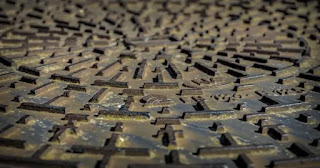An Unmatched Speed: The Manhole Cover's Incredible Journey
After World War II, the United States continued its research into nuclear weaponry, primarily conducting experiments in the Nevada desert. Among these tests, an astonishing phenomenon took place on July 26, 1957: a manhole cover reached an extraordinary velocity, making it the fastest object launched into the atmosphere.
The Genesis of a Space-bound Manhole Cover
The historical account centers around the United States' first underground nuclear tests, with the initial experiment dubbed "Uncle" and detonated beneath the Nevada desert on September 29, 1951. Robert Brownlee designed the Pascal-A experiment, aimed at containing nuclear fallout. Researchers positioned the bomb inside a rock quarry and topped it with a 35-centimeter-thick iron cap resembling a manhole cover.
Intrigued by the cap's rocket-like ejection during the Pascal-A test, Brownlee sought to measure its velocity. As a result, he devised a follow-up experiment, Pascal-B. This time, the bomb was placed more than 150 meters deep, and the test was recorded using a camera capable of capturing one frame per second.
On August 27, 1957, the manhole cover was propelled by the nuclear explosion at an astounding speed of approximately 200,000 kilometers per hour, five times the Earth's escape velocity!
Outpacing the New Horizons Probe
Contrary to the widely-held belief that NASA's New Horizons spacecraft was the fastest object launched into space, the manhole cover surpassed it by a significant margin. Interestingly, Brownlee initially anticipated the manhole cover would return to Earth, but it was never recovered. Consequently, scientists concluded the cover was traveling too fast to burn up before reaching space.
The Enigmatic Manhole Cover's Legacy
While some have doubted the validity of this incredible story, the next time you stargaze, take a moment to remember Brownlee's groundbreaking experiment. Somewhere out there, a manhole cover propelled by a nuclear bomb continues to hurtle away from Earth at an astonishing speed of approximately 200,000 kilometers per hour.


Post a Comment